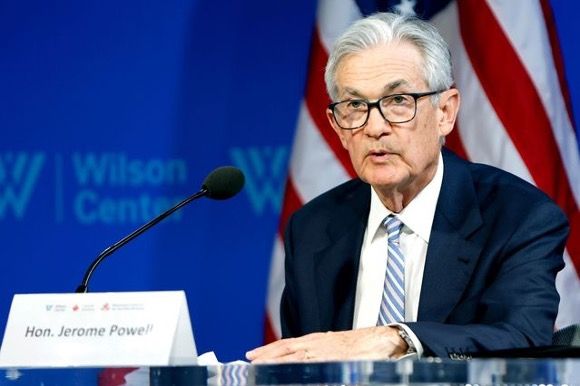S&P 500: +4.02% DOW: +2.60% NASDAQ: +5.94% 10-YR Yield: 3.65%
What Happened?
Stocks rose on Friday, with the S&P 500 and Nasdaq Composite achieving their strongest week of 2024 as investors anticipated Federal Reserve rate cuts at next week’s meeting. The S&P 500 rose 0.5%, finishing the week up 4%, while the Nasdaq gained 0.7%, marking a 6% weekly increase. Investors are split between a 25 or 50 basis point rate cut, with momentum for a larger cut fueled by remarks from former New York Fed Chair William Dudley supporting a 50-point reduction. This has spurred optimism across both defensive and growth sectors, including tech and industrials.
Treasury yields fell to 52-week lows, reflecting anticipation of lower rates, while the yield curve continued to normalize. Info tech and semiconductor stocks, especially those linked to AI, led the rally, with the PHLX Semiconductor Index surging nearly 10% after bullish commentary from Nvidia and strong earnings from Oracle. However, analysts at Schwab caution that aggressive rate cuts often occur in response to economic distress, suggesting that slow, steady cuts may better support equities in the long term. Key economic data next week, including U.S. retail sales and housing starts, could further influence market sentiment as investors brace for the Fed’s decision and potential adjustments to its economic projections.

Fed Seen Nearly As Likely To Cut Rates By 50 Bps As 25 Bps
- The probability of the Fed cutting rates by 0.5 percentage points next week has increased to 47%, up from 28% on Thursday and 14% on Wednesday, reflecting changing market expectations and volatile betting after mixed inflation data.
- The Nasdaq Composite and S&P 500 rallied 6% and 4% for the week, respectively, as rising hopes for a larger rate cut helped lift major indexes, contrasting sharply with last week’s market downturn.
The key takeaway – The chances of a 50 basis point rate cut by the Federal Reserve next week have surged, with futures now showing a 47% probability, up significantly from earlier in the week. This shift has contributed to strong market gains, with the Nasdaq Composite and S&P 500 rising 6% and 4% for the week, respectively, driven by renewed optimism about the Fed’s potential actions.
Mixed economic data has fueled volatility in rate cut expectations, as investors weigh the impact of current high rates on the economy. U.S. indexes ended the week positively, supported by a decline in Treasury yields and a weaker dollar, while gold reached record highs. Despite the uncertainty, a traditional 0.25-point cut remains the most likely outcome, although the possibility of a larger cut has reignited market momentum.

Consumer Prices Rose 0.2% In August As Annual Inflation Rate Hits Lowest Since Early 2021
- The CPI, a broad measure of goods and services costs across the U.S. economy, increased 0.2% in August, in line with the Dow Jones consensus.
- That put the 12-month inflation rate at 2.5%, down 0.4 percentage point from the July level and the lowest since February 2021.
The key takeaway – Inflation continued to moderate with the headline CPI rising 0.2% month-over-month, but core CPI increased slightly above expectations at 0.3%. Initially, investors anticipated a 25 basis point Fed rate cut, but futures now suggest a 47% chance of a larger 50 basis point cut, reflecting concerns over a softening labor market. Fed officials are divided between gradual and more aggressive cuts, with some favoring quicker action to address economic weaknesses. Markets rebounded after an initial sell-off, indicating cautious optimism about future rate cuts.

JPMorgan, Nomura Warn Leveraged ETFs Amplifying Stock Gyrations
- Leveraged and inverse ETFs, which use derivatives to magnify or inverse market returns, are increasingly driving market volatility, particularly in tech and semiconductor sectors.
- These ETFs, with record assets of $117 billion, can influence market dynamics disproportionally despite their small size because their concentrated rebalancing activity
The key takeaway – Recent market volatility has been intensified by leveraged and inverse ETFs, which use derivatives to amplify or inverse returns and rebalance near market close. On September 3, these funds sold $15 billion worth of stocks, significantly impacting major indexes like the Nasdaq 100, which dropped 3%. This concentrated rebalancing activity, which is particularly influential in tech and semiconductor sectors, is contributing to end-of-day stock swings.
Although leveraged ETFs represent a small fraction of the market, their outsized impact is due to the timing of trades, especially in volatile economic conditions. With record-high assets of $117 billion this year, these funds’ rebalancing can amplify market moves, reflecting heightened speculation and adding to the broader market’s turbulence. As their popularity grows, these funds will likely continue to influence daily market dynamics, especially during periods of economic uncertainty.

From Around the Watercooler
Why 96% of Boeing’s Machinists Voted to Go on Strike
Europe Markets Close Higher As Investors Weigh Interest Rate Outlook; Payments Firm Worldline Plunges
MicroStrategy Stock Pops 8% After Company Ups Bitcoin Holdings To $14.6 Billion
Dolphins’ Tua Tagovailoa Sustains 3rd Diagnosed Concussion Of His Career After Hitting Head On Turf


